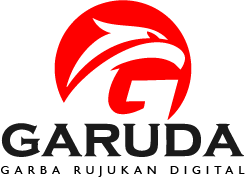ANALYSIS OF CORROSION RATE OF ASTM A 387 GRADE 12 AND A 283 GRADE FOR SULFURIC ACID TANK MATERIAL
Abstract
Full Text:
PDFReferences
K.R. Trethewey, J. Chamberlain, Korosi untuk Mahasiswa Sains dan Rekayasa, Jakarta: PT Gramedia Pustaka Utama (1991).
M.G. Fontana, N.D. Greene, Corrosion engineering, McGraw-hill2018.
D. Suhartanti, Laju Korosi Baja di Kawasan Udara PLTP Kamojang Jawa Barat, Prosiding Seminar Fakultas Matematika dan Ilmu Pengetahuan Alam. Depok: Universitas Indonesia, 2005.
S. Widharto, Karat dan Pencegahannya, PT Pradnya Paramita Jakarta (2001).
D.A. Jones, Principles and prevention of corrosion, Macmillan1992.
M.G. Fontana, Corrosion engineering, Tata McGraw-Hill Education2005.
S. Dean, G.D. Grab, Corrosion of carbon steel by concentrated sulfuric acid, Mater. Performance;(United States) 24(6) (1985).
Z. Panossian, N.L. de Almeida, R.M.F. de Sousa, G. de Souza Pimenta, L.B.S. Marques, Corrosion of carbon steel pipes and tanks by concentrated sulfuric acid: a review, Corrosion Science 58 (2012) 1-11.
Y. Sari, S.T. Dwiyati, Korosi H2S dan CO2 pada Peralatan Statik di Industri Minyak dan Gas, Jurnal Konversi Energi dan Manufaktur UNJ 2(1) (2015) 18-22.
Q. Sun, C. Chen, X. Zhao, H. Chi, Y. He, Y. Li, Y. Qi, H. Yu, Ion-selectivity of iron sulfides and their effect on H2S corrosion, Corrosion Science 158 (2019) 108085.
M. Syamsul Hadi, Teknologi Bahan, Penerbit Andi2016.
DOI: https://doi.org/10.31284/j.jasmet.2020.v1i2.1194
Refbacks
- There are currently no refbacks.
Copyright (c) 2020 Meryanalinda Meryanalinda, Dedy Rachman Ardian, Mochammad Shocib, Ahmad Yasin

This work is licensed under a Creative Commons Attribution-ShareAlike 4.0 International License.
Mailing Address: Journal of Applied Sciences, Management and Engineering Technology - ITATS Institut Teknologi Adhi Tama Surabaya Jl. Arief Rahman Hakim No.100, Surabaya 60117 email: [email protected] Website : https://ejurnal.itats.ac.id/jasmet/index

This work is licensed under a Creative Commons Attribution-ShareAlike 4.0 International License.








